When we are mourning every rupee in the three hundred rupees we spent to watch say a film like Humshakals, or quietly switching on the TV when they start airing Amar Akbar Antony for the millionth time, we don’t really stop and ponder how parts of our lives are tied to films. At least for many of us. But the way we have engaged with our films since Independence has changed dramatically. Here’s how. [caption id=“attachment_1659281” align=“aligncenter” width=“620”] 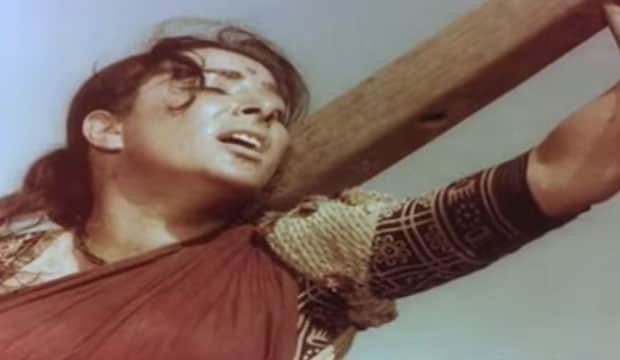 Nargis in Mother India. Screengrab from YouTube.[/caption] Mother India and the great Indian tear-jerker: Anyone who finds it distressful to watch a film in a theatre because of low control on the lachrymal glands, knows why Mother India was the big daddy, sorry, big mommy of the great Indian tear-jerker. After all, the mother-son relationship in India, is not just what keeps political lectures going, it is also the favourite sob catalyst in Bollywood. Before you disagree, consider this: Karan Arjun was a big Bollywood blockbuster, despite Rakhi in the film being the closest the Hindi film industry has come to producing anything close to Rosemary’s Baby. And oh, you don’t have to Google Nirupa Roy. While Mother India was not just that - a sob story - it definitely was a dossier of everything traditional Indian sentiments endorsed. Not to say, even the Academy Awards was close to giving it a thumbs up when the 1957 film earned an Oscar nomination. [caption id=“attachment_1659283” align=“aligncenter” width=“620”]  Madhubala in the colourised version of Mughal-e-Azam.[/caption] Mughal-e-Azam as the spectacle to trump all spectacles: For several generations born decades after Mughal-e-Azam hit the screens in India, ‘Pyaar kiya to darna kya’ was many things - a song tailor-made for monsoon evenings, a precious reminder of music from pre-acoustic blitzkrieg days in Bollywood, a taunt, a joke, a gay Pride anthem and later, terrifyingly enough, a shirtless-Salman movie. The survival and several interpretations of the song, sung by Lata Mangeshkar, picturised on Madhubala and composed by Naushad, from K Asif’s Mughal-e-Azam, is probably representative of what Mugha-e-Azam, released in 1960, meant to the Hindi film industry and Hindi film-watching in the country. From avant-garde sets, some of which reportedly took more than six weeks to be built, to the colourisation and re-release 44 years later, Mughal-e-Azam could well be the yardstick by which Hindi films were to be judged for being stunning, mind-blowing spectacles. Oh, did we almost forget that the latest fad in Indian fashion and a piece of clothing being eulogised by everyone from Manish Malhotra to the retailers in Sarojini Market on this day is called an ‘Anarkali’? [caption id=“attachment_1659285” align=“aligncenter” width=“620”] 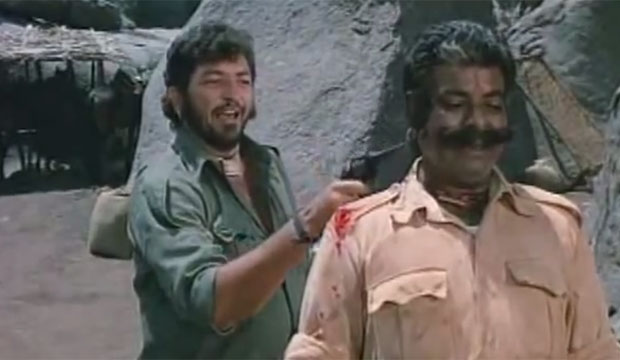 Gabbar Singh delivering the iconic dialogue ‘Tera Kya Hoga Kaalia’ in Sholay.[/caption] Sholay - a film as a national anthem: ‘Ab tera kya hoga Kaliya?’, ‘E Sambha, zara laga nishana’, ‘Chal Dhanno, aj tere Basanti ki izzat ka sawal hai’, ‘Yeh haath mujhe de de thakur’ and ‘Itna sannata kyun hai?’ - that India’s love affair with Sholay shows no sign of abating still, is evident from the fact that generations born long after the 1975 film hit the screens, don’t question the cult status that these dialogues enjoy. There have been other multistarrer blockbusters but this was the one whose dialogue Indians knew by heart. From being used in graphic designs to quirky product designs, from commercials to references in contemporary films, Sholay was basically an epic told in the language of the average Indian aam aadmi. It is, arguably, also the film which set the template for Bollywood blockbusters - the film which every Indian looks forward to in the weekend and doesn’t mind paying for. [caption id=“attachment_1659287” align=“aligncenter” width=“620”] 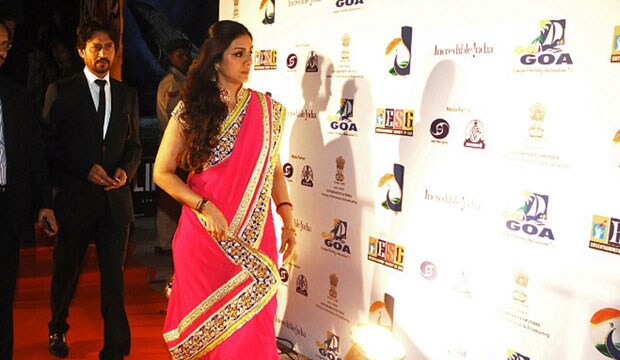 Tabu and Irrfan Khan at IIFI. AFP.[/caption] Film festivals in India and the Bollywood hater’s mecca: In 1952, some enterprising gentlemen set up something that everyone who swears at the very mention of Bollywood, would thank them for. Everyone who was to flinch at a Manmohan Desai film and whose next gen would consider Karan Johar a evil thing, owe it to guess who? The Congress. Because they then ran the government of India, whose Films Division was the brain behind India’s first film festival held across Chennai, Delhi, Calcutta and Trivandrum. A quick Google search reveals that at present, there are 30 film festivals held annually in India, opening avenues for smaller cinematic endeavors. Films from across the globe to works by directors who were unwilling for conform to the mainstream, film festivals were instrumental in initiating a cultural dialogue that enabled people to look beyond the stereotypes of the popular film industry. It also provided the sex-starved aam aadmi a chance to watch “hot” European films. [caption id=“attachment_1659289” align=“aligncenter” width=“620”] 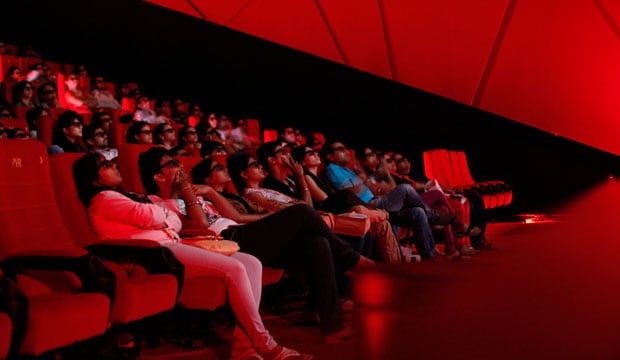 People watching a 3D film in a multiplex.[/caption] The Multiplex - also Rahul Bose gets a career: The other drawback that single screen theatres had - apart from the usual nightmare of a washroom - is that it would only choose a movie which seemed like it would earn big moolah. So in the scramble for revenues, small-budget movies, especially ones which got labelled ‘art films’, would struggle to find theatres. All that changed in 1997 with the advent of the multiplex that could risk the offbeat movie alongside that Salman Khan Eid release. The first multiplex was set up in Delhi by the PVR group when it turned the Anupam Cinema hall into a four-screen multiplex and right now, there 900 multiplex screens across India. All change comes with a price. Multiplexes didn’t just change what we saw in the theatre but also how we saw them. Out went the pakodas, chips, cutlets and Rasnas stuffed in the mother’s monster bag, the flavoured popcorns, the overpriced samosa in a plastic case made a gallant entry. In fact, nachos and corn owe it to the multiplexes for their popularity and introduction in India. But no nostalgia for those old washrooms. [caption id=“attachment_1659293” align=“aligncenter” width=“620”]  A Tata Sky ad promoting its many benefits.[/caption] DTH operators and retro-priced movie: If you are a ’80s or a ’90s kid, you’d know that the feeling of waiting for Doordarshan to announce its Sunday movie was only matched by the curiosity about song number one on Chitrahaar or Superhit Muqabla. While there was immense joy when a movie you missed (and you missed them a lot back then) at the theatres was announced, there was deep disappointment if there was a movie you didn’t care about. Or had watched. Remember how you waited for a ‘big’ movie, which usually had to do with Akshay Kumar displaying his sportsmanship in the 90s? However, a lot of that changed and the excitement killed with the advent of cable television in the nineties itself. The DTH providers like Tata Sky and Airtel took it just a step further. Before you get to watch a movie on TV, with a million ads in between, they gave you the opportunity to request it on their special channel. And for less than 100 rupees! So while you have to find other reasons to look forward to Sundays, movie watching for the broke Indian family just got better! [caption id=“attachment_1660569” align=“aligncenter” width=“620”] 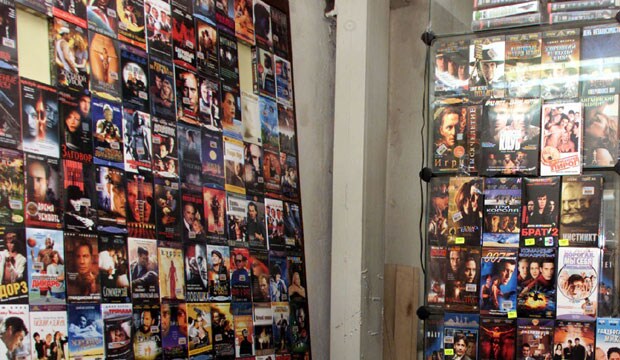 The display at a video CD parlour. Representational image. Reuters.[/caption] The video cassettewala and Torrents: While the average, middle class Indian kid in India would grow up on his diet of Hindi films thanks to TV and the theatre nearby, where do you think they ended up watching The Sound Of Music as soon as they started to write sentences in English? Here’s your cue to stand up and salute the friendly neighbourhood video parlour, our small gateway to everything foreign. From the Wizard of Oz or My Fair Lady as the monthly English cinematic adventure in junior school or the first video cassette of Citizen Kane or Modern Times as the angsty college fresher, the video parlour had them all. Not to mention the odd Bond film meant for the weekends when the parents were away! However, after a long, fruitful reign despite the cable television explosion, the video parlours had to bow out of big cities in 2000s. Because the Internet and torrents had taken their place! Now we download movies more than we watch them.
At least for many of us. In the following list, we try to encapsulate the landmark films and events that affected that way we watch Hindi films, the way we engage with them since independence.
Advertisement
End of Article


)
)
)
)
)
)
)
)
)



